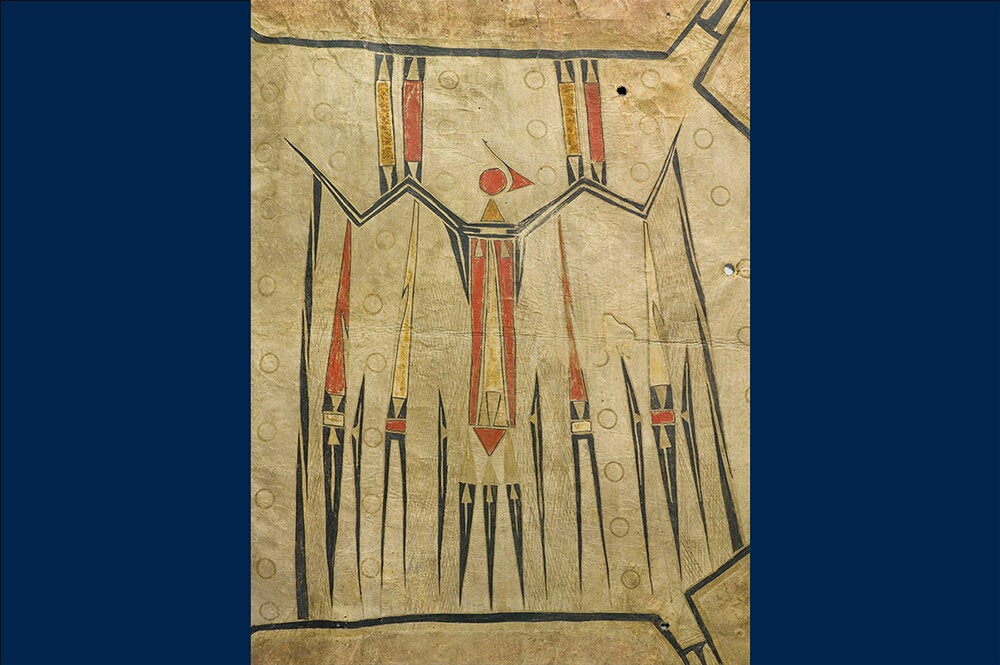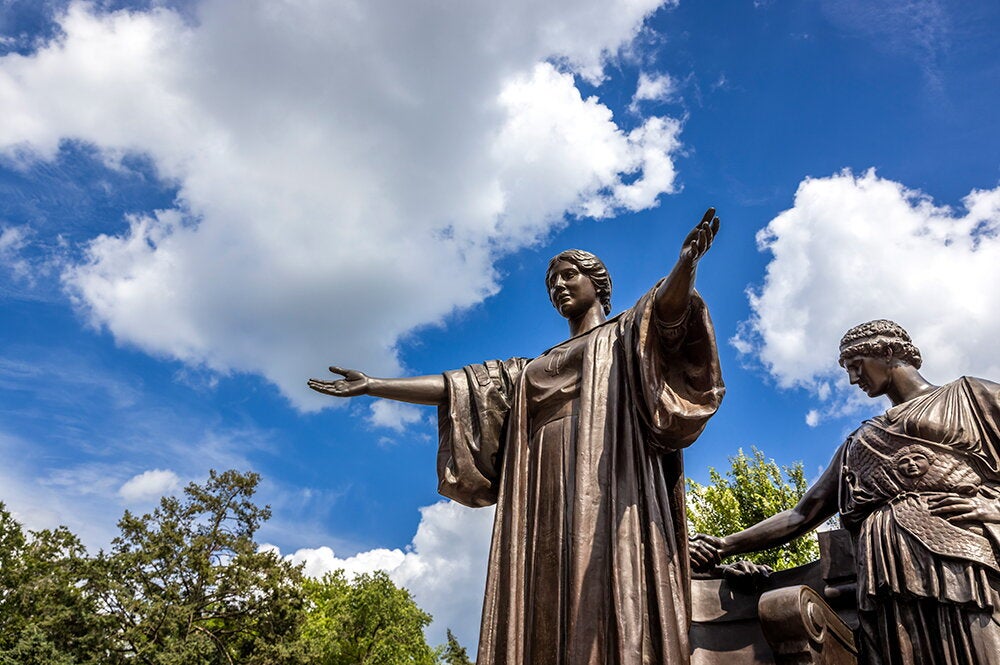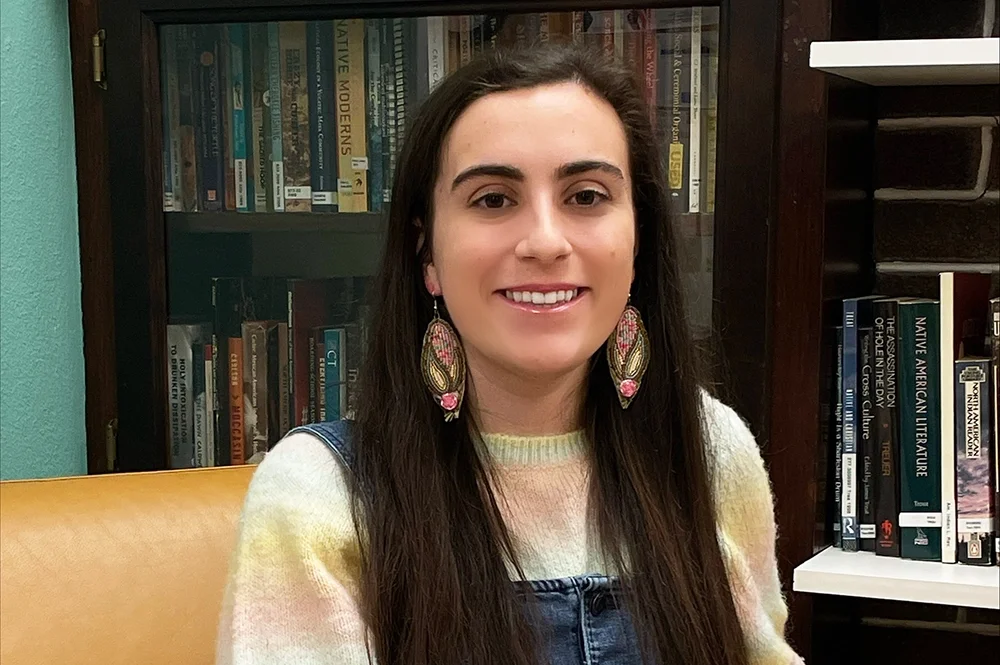
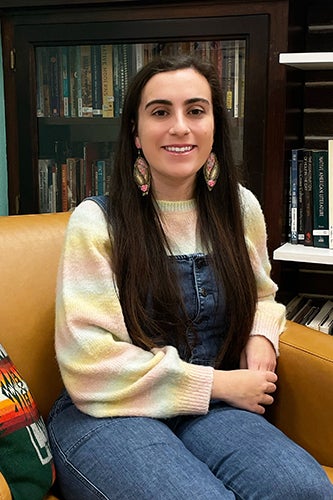
When she arrived at the U of I as an undergraduate student, Cydnee Weber had not yet considered what her role could be as a descendant of the Cherokee and Pamunkey tribes. After she experienced some of the tension over the university mascot and other matters, however, she began to explore her own heritage in a way that would expand awareness of Native American influence on campus.
Weber (BA, ’23, history), with help from Elle Sawyer (MS, ’23, evolution, ecology, and conservation biology), designed an eco-cultural tour to help incoming students appreciate nature and the influence of Indigenous communities. The tour includes the Indigenous Peoples’ Day tree—a sugar maple planted on the South Quad in 2018—and other places on campus where students can connect with nature, such as the Arboretum. While working on the tour Weber noticed a lack of opportunities for students to cultivate their own plants, so she offers ideas on how to raise greenery on campus.
Weber graduated last spring, but the tour is still offered to students who sign up for the Native American House’s New Student Orientation.
Her work was supported through her selection during her senior year as a Brave Heart Fellow, offered by the Aspen Institute’s Center for Native American Youth. The fellowship allows selected Indigenous college students from the Midwest to engage in a curriculum designed to prioritize intergenerational spaces. The fellowship supports 10 individual youth projects designed to give back to the Indigenous community.
The eco-cultural tour was just one way that Weber became involved in advocating awareness for Indigenous culture while she was a student. She also made trips to the Native American Summit in Springfield, Illinois, and created an exhibit on Anishinaabe traditions at the Wisconsin Maritime Museum in 2022. She also became a student ambassador for the Native American House.
Community is a theme within many pillars of Indigenous culture, she explained.
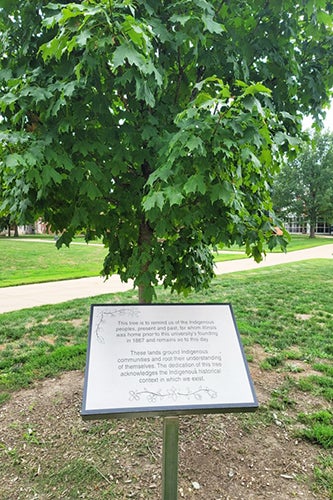
“In an Indigenous context, your community are your relatives. We see each other as not just my neighbor who is really nice or the people you see,” Weber said. “Instead, we can say, ‘This is my aunt, this is my uncle, this is my cousin.’ We refer to each other in familial terms because I think community is more about family. It's more about having those strong relationships with people.”
The bridge between community and knowledge became clearer to Weber as she dug into the relationships between the environment and Indigenous culture. While there are few examples of Indigenous medicinal plants on campus, she discovered that relatives of the medicinal plants, such as sage or sweetgrass, are present, and that they can also educate students about Indigenous culture. Weber wanted to embrace that.
Weber remains at U of I, where she continues dedicating time to helping the Indigenous community. She is an Executive Leadership Fellow at Rematriation, an organization dedicated to building communities for Indigenous women across the United States. She also works as a teaching and grading assistant for an internship program and courses through the Japan House, including Intro to Japanese Arts & Aesthetics and Chado: The way of tea.
Weber’s eco-cultural tours continue, and she hopes to maintain an impact that will benefit many students to come. She thinks of it in terms of seven generations, an important concept in her cultural background.
“The seven generations can be described as a way of thinking for Native people. Usually when we do something, we try and think how it will impact our descendants at least seven generations down the line,” Weber explained. “That motivates us to make bigger decisions as a tribal community, what projects to fund, or even smaller personal decisions like deciding to recycle to help the environment.”
